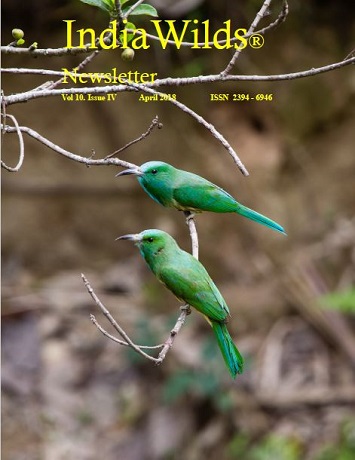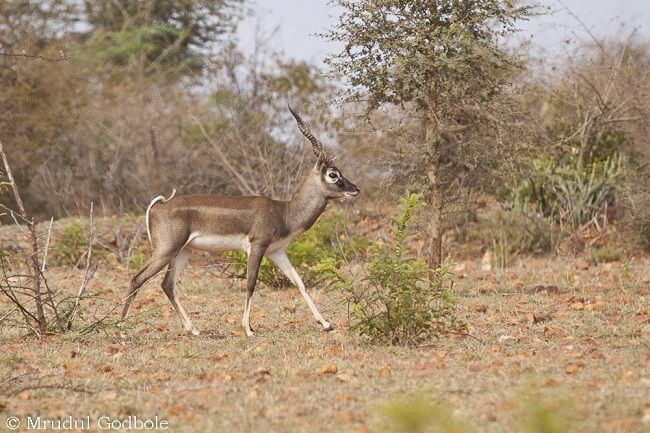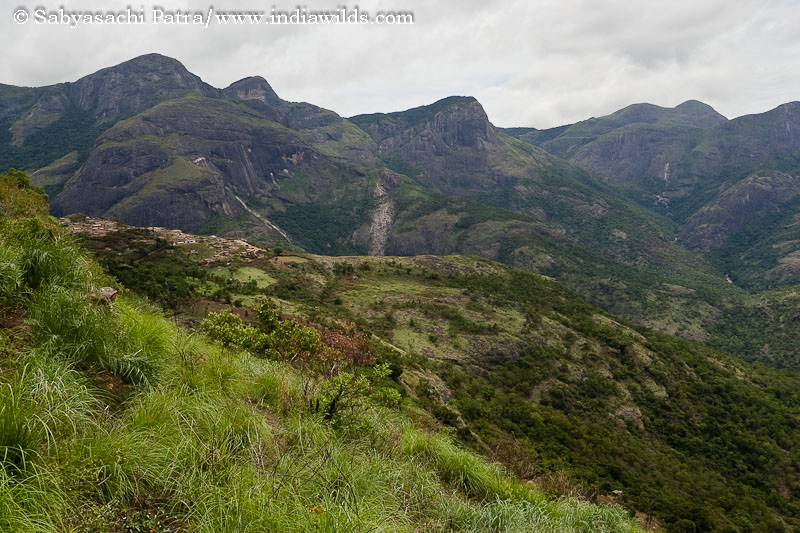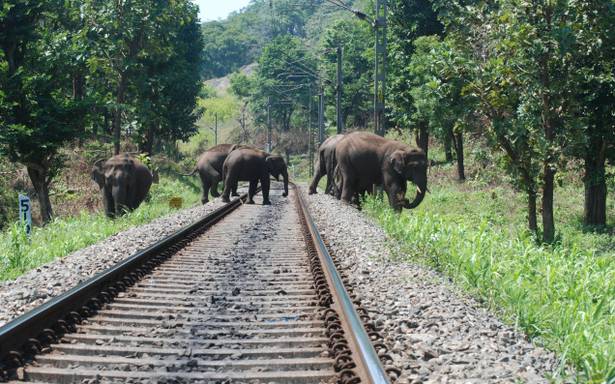IndiaWilds Newsletter Vol. 10 Issue IV
ISSN 2394 – 6946
Wildlife Poaching, Celebrities & slow prosecution:

IndiaWilds Newsletter-April 2018
India’s wildlife has been facing an existential crisis. On one hand their habitat is usurped by Government for infrastructure creation and industrial promotion and on the other hand the remain few wildlife are hunted down by people.
While there are poaching communities and syndicates thriving on selling wildlife body parts and skin, there is also the stone age atavistic psyche of killing wildlife to prove ones manhood and that psyche is still common in todays generation. So this later category of people kill for fun.
These trigger happy hunters create one pretext or other to get license to kill wildlife. They declare wild animals as vermin and then go on jeeps and fire at wildlife and then pose for photos – like the British used to do in earlier era – with their leg on the animal, to show the victor and the vanquished. These photos will help in telling tales over their favourite intoxicants to select group of people.
And there is also a sub-group of people who think they can sneak in and kill wildlife and nothing will happen to them. And this category has a huge impact in shaping the psyche against wildlife.
Several Hindi filmstars belong to this category. One of them is Salman Khan, who has a massive fan following, and who killed two blackbucks 20 years ago while shooting a film on the outskirts of Jodhpur in Rajasthan. It was to his ill luck that the Bishnoi community revere wildlife and protect them with all their might. So immediately after the crime was committed the villagers had apprehended the culprits. However, proving the crime took two post-mortems and analysis by CCMB (Centre for Molecular Biology) to prove that the exhumed remains belong to blackbuck and 20 long years.

Blackbuk
Indian legal system is creaking and groaning and slowly moving along under the weight of millions of pending cases. However, even in this system 20 years for conviction is a very long time. It normally doesn’t take such a long time for justice to be delivered and this was primarily due to the influential nature of the celebrity criminal. Even the doctor who did the post-mortem and tried to coverup and passoff the crime as routine deaths due to dogs and falling in ditch has himself passed away. Some witnesses have also died.
In another such case a celebrity cricketer Mansoor Ali Khan Pataudi was caught killing a blackbuck and was arrested. He died before being convicted. It may come as no coincidence that he was the father of Saif Ali Khan who was with Salman Khan when he killed the blackbucks. However, Saif Ali Khan and others were released even though they were accomplice in the crime. Don’t we arrest a person who has entered a forest along with a woodcutter? Any villager accompanying a poacher for killing animals by using snares, bow and arrows, poisoning or guns is routinely apprehended and convicted. So for some strange reason celebrity accomplices of Salman Khan in his blackbuck shoot like Saif Ali Khan, Neelam, Tabu were not convicted. This may be one of the few rare instances when law has become lenient to accomplices.
Salman Khan has been convicted in other cases which moved at a slow pace. He was convicted on a hit and run case where in an inebriated condition he ran over his SUV on people sleeping on the pavement in Mumbai. One of them died. That case took 13 years for conviction and then immediately he got bail and the verdict was overturned by a single judge in High Court.
Why can’t Government create fast track special courts with daily hearings to immediately clear all the backlog wildlife cases as well as complete each new wildlife case within 15 days? These days some of the rape cases are being tried out in fast track courts and conviction is fast. Ofcourse, after this conviction the convicted can approach higher courts. However, the initial conviction is fast. Whereas powerful people like Salman Khan can still keep on approaching the highcourts and supreme court but for many people the fast conviction would be a massive deterrence. At the moment several wildlife NGOs are doing their best to help the prosecution. However, despite all good intentions and hardwork the result is conviction only after 20 years for Salman Khan. So if the Government has any intention of saving wildlife then it has to immediately work towards fasttrack wildlife crime prosecution.
More than the slow pace of the cases, which people now have realised is increasingly becoming the new normal, it is the attitude of people towards the conviction of the celebrity which is alarming.
Fans of the celebrity as well as people in the film industry and media are over sympathetic and want him to be released. Sample some of the ridiculous arguments:
Siddharth Basu, Quiz master in quizzes like Kaun Banega Crorepati and other productions wanted Salman Khan to undergo active animal welfare and community service instead of jail. “I believe active animal welfare & community service by a public figure sets a far better example to society than singling someone out for harsh retributive punishment simply because “people look up to him”, or gossip & speculation anyway condemns him as a “habitual offender”. Rajdeep Sardesai too believes community service is better than jail and even responded to Siddharth Basu by saying “great minds think alike”. Whether it is great minds or lack of ethics or lack of spine to stand upto a celebrity needs to be ascertained. Nevertheless, the common man is left wondering as to why celebrities need to be treated with kid gloves for heinous crimes whereas common man would have not got bail in such cases.
Some felt that Salman Khan should be released because he is doing charity. Noted actress of yesteryears and Member of Parliament Jaya Bacchhan said “I feel bad. He should be given relief. He has done a lot of humanitarian work”. It is to be noted that Salman Khan started doing his charity work in association with an NGO to alter his image after running over and killing people sleeping in the pavement. Now people are using the pretext of his humanitarian work to save him from being jailed for his criminal acts. Wonder why Dawood Ibrahim the infamous underworld don is not doing charity work in India.
There were also people who talked about why Salman Khan, a man who is doing charity work, is being punished for killing blackbucks. With Salman Khan in jail his charity work may suffer and consequently people will suffer. Is the life of wild animals more important than human life?
Till date we have been prioritising human life over all other life forms. Our narrow interests hold precedence over the welfare of other species. Many species have been obliterated from the face of the earth to satisfy our greed. And this is continuing even till date. The Government has been destroying pristine wilderness places and ecologically fragile wild lands at the altar of infrastructure creation, which it terms as development. Even when it has been proved that a project is ecologically disastrous, the Government justifies continuing it in the name of huge amount of money already sunk in the project.
It is very important to educate people that our projects which don’t take into consideration the ecological impact is ultimately harmful for mankind. Each species on earth is intricately linked and when we destroy this balance in the ecosystem by selectively destroying certain species and their habitat, the world becomes a bit inferior place for human survival in the long run.
Rajinikanth, a filmstar and celebrity with a massive pan-India fan following, who is contemplating his political debut recently said this about the protests by people against Sterlite industries, “Nature and the God are one. Nature is made up of five elements; water, earth, space, fire, and air. And a human body is made up of four of these elements. If we spoil any one of them, it will lead to the destruction of the world and human race. We should not allow anything that pollutes, water, earth, and air. Even if it generates hundreds of crores of income for the government or creates thousands of jobs for the people, we should not give place for such schemes.” He further said “The people who run such industries and factories will be able to make a lot of money but they won’t have peace of mind.”
We have to also educate people that it is not morally right for us to destroy other species. Famous philosopher Immanuel Kant had said:
“Two things fill my mind with awe,
The starry sky above us and the moral law within us”
Unfortunately, these days we neither see the starry sky above us due to light pollution, nor do we care for the moral law within us as we seem to have sacrificed morality at the alter of greed. How else can we justify when the Chief Justice of India who is a high constitutional authority, refuses to recuse himself from cases where his involvement is imputed and in a case where his role is being questioned. He became the judge and jury in the case against his own role and orders. Common man is not immune to what is happening around him. For too long politicians were known as corrupt. When the judiciary too falls in the perception of people, one can quickly realise that the society is quickly descending into a moral abyss. In such a situation, it becomes easy to justify criminal acts of reel heroes like Salman Khan.
Indians know how to find out loopholes in any law. So there are some who are already believing that this slow pace of case means people should hunt wildlife when they are there in their fifties. So after twenty years they will already be 70 and may be on the verge of dying. And if alive, they can always seek clemency like the Ansal brothers did in the Upahar Cinema hall fire case. Mansoor Ali Khan Pataudi also died before his blackbuck poaching case could reach conviction stage. Not only the Government and courts need to be think where they have slipped, the society too needs to self introspect.
There was a time when our wildlife were closely associated with our Gods. Wildlife was intricately linked with our religion, culture and society. Today, we have moved 180 degree opposite and are actively persecuting and obliterating wildlife. Our greed has trumped over our morality. Short-term benefits have been prioritised over long-term survival. Common sense has become uncommon. Though we may still be killing animals and men in the name of Gods and religion, the Gods won’t be kind on us. History too will not be kind on this generation.
New National Forest Policy: Converting Forests into Wood
Apart from poaching one of the major problems for wildlife is reduction in their habitat or their habitat becoming unsafe and unsuitable for their survival.
To improve in life we should look and improve upon each facet of our lives. So when the Government in 2014 shortly after being elected promised relook of the policies, we thought some of the archaic policies may get a booster dose. Unfortunately, most of the new policies seem to be written from a industries point of view, if not directly by industries.
In India today, there is a massive effort to usurp land. Whatever land is left is being converted for commercial and residential projects in many places. So where is the space for tree plantation? Government is opening up dense forests for projects with a condition that the project proponents pay up money towards the CAMPA funds. The funds remain unutilised due to lack of effort from the Government and also because there is lack of space for compensatory afforestation. There have been reports of forest officials forcefully taking over dense community managed forests and earmarking those areas for compensatory afforestation plantations. This is outright wrong and unfortunately as we are aware many such acts are intentionally done to circumvent the law.
Various state Governments have been pulled by the court for spending the CAMPA funds for street light, roads and other such projects. Atleast the Government can utilise the CAMPA funds for relocation of villages from within the protected areas. This would atleast help the present forest areas to be free of human interference and help the wildlife breathe and breed in peace.
The draft of the New National Forest Policy which was only open for suggestions till 14th of April is one such case. In the draft New National Forest Policy the Modi Government has clearly shown its plant to open up all our forests and wild lands and handover those to industries for commercial exploitation.
The Government is interchangeably using forests and trees and forests and plantations as if they are the same. Under the head “Increase the productivity of Forest plantations” the draft policy states “Productivity of the forest plantations are poor in most of the States. This will be addressed by intensive
scientific management of forest plantations of commercially important species like teak, sal, sisham, poplar, gmelina, eucalyptus, casuarina, bamboo etc. The lands available with the forest corporations which are degraded & underutilized will be managed to produce quality timber with scientific interventions. Public private participation models will be developed for undertaking Afforestation and reforestation activities in degraded forest areas and forest areas available with Forest Development Corporations and outside forests.”
This is a significant departure from the previous forest policy which clearly banned private plantations or any other activities in any natural forest area.
Industries are supposed to directly procure their needs from one to one interactions with people and not directly source their needs from forests. However, the Government seems to prove that it only is existing for industries and hence revamping all the rules to facilitate their interests.
During British Raj our forests were seen as a resource to exploit. The late Kailash Sankhala has scathingly written about this “wood-cutter mentality”. Foresters used to measure the forest interms of cubic-feet of timber that it can yield. Consequently it resulted in massive destruction of forests. Nobody gave a thought that these forests were the products of thousands of years of evolution and in one stroke we were finishing off these forests. Today the Government of India is proving that it is no different than the British. The British thought only about looting our natural and other wealth and the current Government too is focused on the same.

Shola Forests
Recently the Union Minister for Environment, Forests and Climate Change, Dr. Harsh Vardhan said that India has the potential to become a leader in bamboo export. He said that his Government had recently removed bamboo from the definition of a tree to ease felling and transit requirements. He said “We believe in the concept of whole world as one family” and natural resources such as bamboo belong to the entire world. So it is very clear that the new Forest policy is primarily used as a business proposition to exploit natural heritage and make money.
Our forests are increasingly becoming fragmented due to linear projects like dams, roads, railways, canals or other projects like mines, power plants etc making it difficult for wildlife to move in their former range. Their habitat is fragmented resulting in change in behaviours of our wildlife as well as severely curtailing their ability to survive. The fragmentation of habitat is also resulting in local extermination of certain species. Though the scientific community has undertaken some well publicised high profile tiger, gaur and rhino locations, this is a very limited one time solution. It is important to recreate the lost corridors to facilitate the movement of wildlife from one forest area to another. Some of these corridors have drastically shrunk due to conversion of landuse and concretisation. Firewood collection and logging has resulted in conversion of dense forest cover into open degraded forests unsuitable for concealing or hiding which makes the wildlife more visible to the people. Securing our wildlife corridors will help in genetic diversity as well and long term survival of our wildlife. The new Forest Policy should have included plans about creating landscape levels of connectivity between various protected areas.
Grapevine says that this new forest policy is another attempt by the current Government to modify the policy and satisfy the industrial lobby – who are well known donors to the political parties – before the next loksabha elections take place. Though we cannot ascertain the veracity of truth in this, however it is abundantly clear that the drafters of the forest policy certainly don’t have the interests of forests in their mind.
Nevertheless, it is unfortunate that our present Government as well as the bureaucrats are so ecologically illiterate that they are drafting such disastrous policies. There was a time when the politicians used to place the interests of forests and wildlife above everything else. Rajesh Pilot who was a Union minister was agreeable to the idea of re-establishing a link between Sariska and Ranthambhore which would have required acquiring some land. Though his village would have been impacted, he had in principle agreed to the idea. It is another matter that he died in a road accident and the idea never took off. Alas, the politicians today are just interested in short-term gains for themselves and not the long-term wellbeing of the country. They are forgetting that no country can prosper by sacrificing their environment and forests.
Vanishing Elephant Corridors
On 6th of April 2018, the Hon’ble Supreme Court has started the final hearing on the issue of saving Elephant Corridors in India. It would take about four more weeks for completing the arguments. Hopefully the Hon’ble Supreme Court gives a defining verdict so that our elephant corridors and hence elephants can be saved.
Much of the elephant habitat falls outside the existing protected areas. And as we are all aware that there is an unprecedented land grab happening in our country. Every square inch of area is being taken over for concretization in the name of development. In several cases the district collectors have even blamed the people for low pace of constructions commenting that elephants will not come if concrete buildings are constructed. In many areas locals along with forest officials are building elephant proof trenches to stop elephants moving in their traditional path. All that is doing is forcing elephants to take a detour and this often brings them face to face unprepared people and cause havoc. Atleast 500 elephants are killed every year in conflicts.

Elephants crossing
Wildlife Trust of India in a pathbreaking study has identified 101 elephant corridors in the country. Shocking details have emerged from the study. The elephant corridors with width of 1-3 kms have decreased from 41% to 22%. And the percentage of elephant corridors with complete forest cover has shrunk from 24% to 12.9%.
Elephants are mega-herbivores. They need to feed a lot. So they cannot remain stationary at one place ie elephants cannot be confined to one Sanctuary or National Park all the time. The elephants also have a varied diet. They feed on grass, leaves, bushes, creepers, bark of trees, bamboo, fruits, flowers etc spanning several hundred species, some of which are seasonal and are available at different places at different times of the year. With only half of the amount digested, they act as very good seed dispersers over a large range as well. They play a big ecological role and hence people should be more tolerant of wild elephants and should leave them enough space and right of way they deserve.
There is a lot of illegal mining happening which is causing considerable stress to elephants. The human population is also exploding. There is lot of illegal migrations happening and most of these people are settling in the hills and areas with forest cover which happen to be elephant corridors. There are also some vested interests which are trying to settle people in those areas to grab land under the Forest Rights Act. Unfortunately this legislation with good intention has actually opened the pandoras box leading to destruction of forests. Indian ingenuity or “jugad” as it is well known these days is unfortunately being utilized to find loopholes in our legislations. And our elephants are becoming the silent victims.
The Government of India under Shri Manmohan Singh had declared the elephant as the Natural Heritage Animal. However, apart from the optics of the declaration it did virtually nothing and the Elephant Task Force report created with painstaking effort has been consigned to the dustbin. The Elephant Task Force report had identified the investments that need to be done to procure land where the elephants tread and secure these areas for longterm survival of the elephants. Unfortuantely, the Government of the day didn’t do anything. And the new Government at the centre, helmed by Shri Modi has unfortunately become even much more severe on India’s wildlife and wilderness areas. Hopefully the Hon’ble Supreme Court can force the Government to act. Unfortunately as we see in many cases including contentious Cauvery water case, the Government prefers to not act.
India is currently facing an unprecedented ecological crisis. Our dense forests and ecologically fragile places are being opened up for mining or diverted for industrial use. Most of our forests are invaded by invasives and have lost their species richness. Habitat of wildlife is shrinking. Many species are getting locally exterminated. Climate change has started hitting us. India is increasingly facing desertification. Most of our cities are facing water problems. The Government of the day has to understand that our well being is intricately linked to our ecology. We can act on a piecemeal basis. Unfortunately, unless sufficient people read and raise their voice on these topics, the Government is going to be unmoved.
We owe to our succeeding generations to atleast be assertive and raise our voice. We need to ask our representatives what they have done to save our environment, wildlife and forests and consequently from the ill impact of climate change. Perhaps only then the elected representatives will put pressure on the Government to act favourably.
“Bengal” Tiger looking for home killed by villagers in Bengal
It is an irony that people of Bengal who often use the moniker Royal Bengal infront of the name tiger have killed a wandering tiger which had set up its base in lalbgargh forests.
In February a tiger was caught on the camera traps of the forest department in lalgarh in west medinapur district. The camera traps were setup after locals complained of cattle lifting by a tiger. One of the camera traps in Madhupur forest captured the image of an adult tiger. There were no recent reports of tiger or leopards. Only one leopard sighting was reported from 20 years ago. It is assumed that the tiger would have wandered away from Similipal Tiger Reserve in Odisha which is about 196 kms from the place.
Immediately the forest department had alerted the locals and had advised them to be cautious in their movements after sundown. However, that further panicked the locals and now they turned into a mob and killed the tiger with bows and arrows. The forest department was a mere spectator.
On 13th of this month the locals used traditional arms like bow and arrows and spears after cornering the tiger and killed it. This is the time of traditional hunting season for the local tribals. During this time the tribals generally indulge in “akhanda shikar” where they burn part of the forest and then wait at the other end to kill the fleeing animals.
The forest department had used live traps as well as tried to use quadcopters to spot the tiger and then tranquilise it. However the local forest department appears to have violated some of the protocols laid down by the National Tiger Conservation Authority for capturing tigers. The area where the tiger was spotted was not adequately secured, which led to the people easily reaching there and killing the tiger. Commenting on the incident the Gajender K Sharma, Country Director of World Animal Protection said “We call upon the State Government to involve experts from outside in case they lack the requisite ability to humanely tackle conflict situations involving tigers and other species of endangered wildlife in Bengal.”
The Union Women and Child Welfare minister Maneka Gandhi who is an activist herself and have had been Minister of MoEF in VP Singh Government said “Thousands of so-called tribals come to the forests around Lalgarh and kill thousands of animals every year. This year was no exception. They do not kill the animal for themselves. They are being used by smugglers and poachers and the state forest department has done nothing about this. West Bengal is the only place in India where such illegality is allowed and encouraged. It is extremely important to stop the ‘Shikar Utsav’ here.” She further said that “The point is that, if the Chief Minister was interested she could have stopped it in two minutes. But it is all about the vote bank. If 10,000-15,000 animals die for the sake of securing the vote bank, what can you do?”
However, the Chief Minister of West Bengal hit back by saying “I am saddened that a Union Minister has made unwarranted comments about a community. She said that Adivasis are poachers and they torture animals. I feel she should apologise to the Adivasi community.”
The State Government has promised an investigation but when politicians slugfest over an event, one can be sure that nothing is going to happen.
It is normal for tigers to cover large distances in search of a suitable habitat. That is how they repopulate forests. This is a natural dispersal mechanism. If a tiger repopulates a forest where tigers were earlier locally exterminated, then it is a good sign. This is way cheaper and safer than tranqulising and relocating a tiger from another forest. The forest department should have immediately taken major steps to sensitise the people about the ways of the tiger since the new generation is not aware about the tiger behaviour.
Whenever there is fear people will react badly. If people fear for their lives, then they will immediately feel that they have lost control over the situation and then take steps to eliminate the source of fear. The anger due to loss of cattle should have been taken careoff by immediately compensating the villagers. They should have been told that tiger coming to the area is a good sign as that would further bring in tourism to the area. Support of the locals should have been enlisted to protect the tiger and they should have been paid as informers and patrolling guards. This would have helped to turn the opinion in favour of the tiger.
Unfortunately the forest department was too weak hearted and wanted to tranquilise and relocate the tiger, perhaps to a zoo. That clearly shows that intent of the forest department. They don’t want tigers to roam again in our forests. It is natural that some locals will not venture into the forests for the fear of the tiger and other herbivore poaching can come down when there is a tiger. So the forests could have seen less of anthropogenic pressures due to the tiger. The tiger has a very clear role as an apex predator in an ecosystem. So by trying to catch the tiger it is clear that the forest department don’t want our forests to be healthy and pristine again.
Tiger is our national animal. However, we are not treating it as such. We are treating the tiger like pariah and unleasing violence on it. What wrong did the tiger do? It was simply following its instincts and moved into an area which didn’t have any other tiger ie. any other competition. Unfortunately, it didn’t realise that humans can be so cruel. All the tiger did was to kill a few cattle to satisfy its hunger. It didn’t wage a war against humanity. It didn’t deserve to die. We are failing our tiger. By and large this behaviour is in sync with our generation failing to save our wilderness and wildlife.
Conservation News:
Four Elephants mowed down by train in Odisha:
Indian Railways is continuing with its elephant killing spree. At least four elephants have bee killed by the Alleppey Bokaro express train when the elephants were crossing the track and the train mowed them down. This incident happened in Odisha’s Jharsuguda district near the Bagdihi Railway station. This falls under the South Eastern Railways.
Local people first saw that there were two adult elephants and two calves lying down near the railway tracks. Later the forest officials on being informed by the local people reached the area and removed the dead elephants from the railway tracks.
It is not know if there are more dead elephants nearby. It is speculated that some injured elephants may have died nearby after being hit.
Indian railways have been repeatedly told to reduce the speed of trains near elephant corridors but they violate it. Any private vehicle hitting and killing a protected species will immediately be impounded. However, railways is over all laws. Sadly! Discuss it here: https://www.indiawilds.com/forums/showthread.php?18750-4-Elephants-mowed-down-by-AlleppeyBokaro-express-in-Jharsuguda-in-Odisha
Railways drop plans to upgrade line through Dudwa:
In a good news for elephants across the country, Indian Railways has taken a decision to preserve five of its existing meter-gauge lines in Uttar Pradesh, Madhya Pradesh, Rajasthan, Assam and Gujarat. One of the meter-gauge lines is the Nanpara-Mailani line passing through the famous Dudhwa Tiger Reserve. The Railways has decided to run these five meter-gauge lines as heritage lines.
The Indian Railways will be shifting all the other meter-gauge lines to broad gauge. This appears to be based on a case which was initially filed a Satish Kumar Mishra, advocate in the Allahabad High Court in 2016. A total of 91 animals have died in Dudhwa in 10 years due to the train line. Later the Dudhwa Tiger Reserve was included as a party in the case as it concerns them. The Hon’ble High Court bench had asked all those involved to sit down and discuss and come at a solution.
The other railway lines which will be preserved pass through Madhya Pradesh, Rajasthan, Assam, and Gujarat.
The five meter-gauge lines so identified has been decided to be retained as heritage lines. One of those is the Mhow-Kalakund line in Madhya Pradesh spanning about 30km. It would be used for tourism purposes. Another line passes through Gir forest in Gujarat and it spans for about 50km. The Marwar-Udaipur meter-gauge line passes through Todgarh Raoli in Rajasthan. This line is 70km long and will also be preserved. About 120km line known as Mahur-Harangajao meter-gauge in Dima Hasao district of Assam will also be preserved as heritage line. It has many tunnels and has unique beauty.
Block chain technology to support sustainable development goals:
The lure of bitcoins may have resulted in many people losing their hard earned money and some benefitting from it. However, the blockchain technology which is powering those cryptocurrencies may be of help in many ways. At the moment, UNDP has decided to partner with Blockchain, along with the UN Refugee Agency (UNHCR) and the World Economic Forum (WEF) to explore the use of block chain technology for development.
UNDP is trying to explore the use of blockchain technology for conservation of natural resources, financial inclusion of many communities, economic growth and security for uplifting the conditions of many people worldwide.
UNDP says:” The potential of block chains to disrupt industrial sectors, commercial processes, governmental structures or economic systems seems to know no bounds. We suggest that the transformative power of block chain technology should not be seen as a threat to existing systems of governance; rather, it should be seen as an opportunity for national and international institutions to defend the rights of those they represent and to accelerate our collective progress towards meeting the United Nations’ Sustainable Development Goals.”
UNDP believes that blockchain technology can bring in transparency which is the bedrock of effective and ethical governance. “Block chains can bring transparency to opaque or corrupt systems, and verifiability and immutability to commercial processes. They can bring security and resilience to vulnerable infrastructure, ensure individual privacy whilst guaranteeing autonomy, and encourage cooperation and engender trust where they are needed most.”
UNDP believes that “Block chains can ease the frictions that prevent a vast array of sustainability, humanitarian, and environmental initiatives from fulfilling their potential.” So UNDP has brought out a White Paper called “The Future is Decentralised”.
This white paper explains how this unconventional technology works and how it is already being used to pursue conventional ends. It illustrates how block chains have brought new levels of efficiency and effectiveness to the fields of development aid, supply chain management, renewable energy, economic growth, and several others.
If it works as claimed by UNDP, then hopefully Governments, NGOs, and citizens who are working together towards a common goal can efficiently work together by exploiting the versatility of block chain technology to create new and powerful partnerships. Hopefully this can result in preserving the last tracts of fast vanishing wilderness and wildlife on earth and help in avoiding the spectre of climate change.
Controversial Environmental Clearance for Neutrino Project:
MoEF&CC has controversially granted environmental clearance to the Neutrino Observatory project (INO) as a special case. The India Neutrino Project is to come up in Bodi West hills amidst stiff opposition from the locals.
The Expert Appraisal Committee (Infra 2) has mentioned that it found the project to be out of scope but was asked by the ministry to clear it as a special case.
Earlier the National Green Tribunal had quashed the environment clearance and had asked to reapply under the EIA notificiation 2006 to get the clearance as the project site is at 4.9km distance from the Mathikettan Shola National Park in Idduki district of Kerala. The NGT had said “the document produced before this tribunal by Mr. Radhakrishnan also shows that the distance is 4.9 km and in such view of the matter, not only the project in question should be treated as Category-A project but also clearance under the Wildlife (Protection) Act, 1972 is to be obtained from the National Board for Wildlife.”
Following this directive from the NGT, TIFR which is the project proponent applied for environment clearance under category B of 8 (a) which is the schedule dealing in building and construction projects in the EIA Notification 2006. However, the Tamil Nadu State Expert Appraisal committee had refused approval as they noted that the INO project is not a simple building and construction project as it would involve massive blasting of rocks and lot of high strength explosives to break those rocks. The tunneling work inside the mountain will need excavation of 6 lakh cubic meter of charnockite rock. Additionally the tunnel and cavern will be 1 kilometer deep from the mountain top and hence will need lot of reinforcements to stop the mountain roof from collapsing.
The State expert appraisal committee had also rightly pointed out that the area falls under the Western Ghats which is a global biodiversity hotspot. There are many endemic species of plants, animals, birds, herpetofauna in the area. The area is also catchment of various streams which ultimately become part of the Vaigai river watershed and hence is very important to be protected as the water quenches the thirst as well as irrigation needs of five districts of Tamil Nadu. So now no wonder local people are also up in the arms against the neutrino project.
However, now the Central Government has forced the State expert appraisal committee to clear it as special case. Earlier Tamil Nadu under the Chiefministership of J. Jayalalithaa didn’t clear this proposal. However, the present AIADMK leadership is hobnobbing with the BJP and taking instructions from it. The present AIADMK believes their survival is dependent on the Central Government. So even though the Deputy Chief Minister represents the Bodi assembly constituency where the Neutrino project is going to come up and large number of locals are demonstrating there, the AIADMK Government is fine with the neutrino project.
There are many physicists who want this project, as obviously they are an interested party. In the past some biologists have acted as consultants and hence pushed for environmental clearance to the neutrino project. The unfortunate situation in India is that no one is thinking in a holistic manner for preserving our wilderness and wildlife. Everyone is looking for their narrow interests. In such a situation ultimately India’s environment and wildlife always comes out as a loser.
Stakeholder Consultation on National Clean Air Programme (NCAP) Inaugurated:
MoEF&CC has conducted a stakeholder consultation for the National Clean Air Programme. The ministry has formalized the NCAP as a long-term time bound national level strategy to tackle the increasing air pollution problem across the country in a comprehensive manner. The total tentative cost of NCAP is estimated at Rs 637 crore.
Emphasizing the need to translate the outcome of the deliberations, in the form of suggestions on the ground, Minister of State for Environment, Forest and Climate Change, Dr. Mahesh Sharma has said that the National Clean Air Programme (NCAP) is expected to play a crucial role in addressing the increasing air pollution across the country in a comprehensive manner. Inaugurating the two-day Stakeholder Consultation on NCAP here today, Dr. Sharma emphasised the impact of air pollution on health and general well-being of human, floral and faunal population. He said that stakeholders are and must act as “givers” to the society.

Pollution
Speaking on the occasion, Secretary, Ministry of Environment, Forest and Climate Change, Shri C.K Mishra said, “While as a nation, we need to be concerned at the quality of air, as a Government we need to have that commitment to ensure that there is a defined time-frame that we may set for ourselves after today’s discussions”. He added that all the states and stakeholders need to spread the campaign for clean air across the country. The Secretary pointed out that technology is one of the critical elements of NCAP. “Let us together find solutions that are nationally acceptable, but more importantly, which are locally possible”, Shri Mishra stated.
The Stakeholder Consultation involves all the State Governments, considering that NCAP is a pan-India programme and inputs from states will be useful in evolving an effective implementation strategy. The overall objective of the NCAP is comprehensive management plan for prevention, control and abatement of air pollution besides augmenting the air quality monitoring network across the country. The NCAP focuses on collaborative and participatory approach covering all sources of pollution and coordination between relevant Central Ministries, State Governments, local bodies and other stakeholders.
The focus is on intensive awareness, training and capacity-building drive, with specific impetus on augmentation of manpower and infrastructure facilities of CPCB and SPCB under the capacity building component of NCAP. Separate components with emphasis on three tier mechanism for review of monitoring, assessment and inspection for effective implementation under NCAP. A credible, transparent and accountable data collection and monitoring system that is available for timely swift action is to be ensured.
Since air pollution mitigation necessitates collaborative efforts, the success of NCAP is expected to be determined by the participation and contribution of stakeholders. Accordingly, there is a need for consultation with various stakeholders viz. state governments, relevant ministries, institutes, academic institutions and industries. The approved NCAP has already been shared with state governments and has also been uploaded on the Ministry’s website for inviting comments from the public.
The key components of NCAP include – city-specific air pollution abatement action plan for 100 polluting cities of the country similar to one for Delhi, increasing the number of monitoring stations, data dissemination, public participation on planning and implementation, setting up of Air Information Centre for data analysis, resource apportionment studies, setting up of national inventory, guidelines for indoor air pollution and setting up of rural monitoring stations.
Equipment Discussions:
Blackmagic launches BMPCC 4K pocket cinema camera
Blackmagic Design has announced its new pocket camera branded as the Pocket Cinema camera 4K. It has a Micro 4/3rd sensor, 13stops of dynamic range and dual ISO upto 25600. It has a new handheld compact design.
Blackmagic Pocket Cinema Camera 4K: BMPCC 4K
Z CAM E2 Cinematic Camera:
The 4k Camera market space is hotting up. Z Cam has announced the E2 Cinematic camera and it will be available by July 2018. This camera has a micro 4/3rd sensor sourced from Sony. However, it boasts of a phenomenal 120 fps slow motion in 4K with 10 bit colour. This would rival the specs of much higher level cameras.
The company also said that this camera will have deep learning technology which will help in continuous autofocus. How good it will be compared to the class leading DPAF (Dual Pixel AF) of Canon is yet to be seen. Nevertheless, it sounds pretty interesting.
The camera is box shaped and lacks a view finder. So one has to use an external monitor to shoot. The Z Cam E2 records to C Fast cards. There is a USB-C port so one can attach SSD and record directly as well.
Following are the specs of the Z Cam E2:
4K @120fps, 10 bit color, H.264 & H.265 (10 bit)
4/3″ Sony CMOS sensor, pixel size = 4.63m
Micro Four Thirds lens mount
Gigabit Ethernet port for control setting & live streaming
iOS app for control setting & live preview
4K @60fps HDMI 2.0 4K 60fps, 10bit
4K 60fps SDI 12G (optional accessory)
Deep Learning Engine built in with SDK
Global shutter variant to be available soon
Indicative Retail Price: $1,999 USD
EIZO Releases 31.1″ DCI-4K Monitor with HDR Gama Support
Hakusan, Japan, April 5, 2018 – EIZO Corporation (TSE: 6737) today announced the new ColorEdge CG319X – a 31.1-inch monitor with DCI-4K resolution (4096 x 2160) and HDR gamma support for the professional post production workflow. It is the successor model to the CG318-4K with several upgraded features.

Eizo-ColorEdge-CG319X
Distinguishing it from its predecessor, the ColorEdge CG319X comes equipped with HLG (hybrid log-gamma) and the PQ (perceptual quantization) curve for displaying and editing HDR (high dynamic range) video content. The optimized gamma curves render images to appear more true to how the human eye perceives the real world compared to SDR (standard dynamic range). Having a monitor equipped with HDR gamma support ensures professional creators can reliably display HDR content during the editing process so it is ready for color grading at the end of the workflow.
ColorEdge CG319X is equipped with an upgraded built-in calibration sensor, which allows the user to continue to operate the monitor even during recalibration. The sensor swings onto the screen at a time designated by the user and takes up minimal space so work remains uninterrupted.1 A built-in sensor eliminates the need for a third-party calibration device and ensures the screen stays color-accurate.
The monitor’s wide color gamut reproduces 98% of the DCI-P3 color space used in the media and entertainment industry. In compliance with the DCI standard, the ColorEdge CG319X offers a high contrast ratio of 1500:1 for producing true blacks that are otherwise difficult to display on a typical LCD monitor. In addition, it is equipped with a retardation film which allows tones to retain their depth even when viewed from an angle.
The color and brightness of an LCD monitor can be affected by changes in ambient temperature of the monitor itself. The ColorEdge CG319X is equipped with an internal temperature sensor which detects those changes and adjusts the monitor so gradations, color, brightness, and other characteristics continue to be displayed accurately. The algorithm used in the AI (artificial intelligence) 2 of the monitor allows it to perform this temperature detection and adjustment even at high brightness levels for providing a truly accurate viewing environment. In addition, EIZO’s patented digital uniformity equalizer (DUE) technology also counterbalances the influences that a fluctuating temperature may have on color temperature and brightness for stable image display across the entire screen. The monitor also provides noiseless, fanless operation while still maintaining low heat output without impacting performance.
Additional Features
- 3D LUT for individual color adjustment on an RGB cubic table
- 10-bit simultaneous display from a 24-bit LUT for smooth color gradations 3
- DCI-4K resolution at 60 Hz via DisplayPort 1.2 or HDMI input
- Broadcast and cinema preset modes: EBU, Rec. 2020, Rec. 709, SMPTE-C, DCI, PQ, and HLG
- Two DisplayPort and two HDMI inputs
- Ergonomic stand which meets IEC/EN 62368-1
- Light-shielding hood included
- 5-year manufacturer’s warranty 4
EIZO will be showing the ColorEdge CG319X for the first time at the NAB Show 2018 in Las Vegas, USA from April 9 – 12. Visit Booth SL15713 to see the product.
Availability
The ColorEdge CG319X will begin shipping in May, 2018. Date of availability varies by country so contact the EIZO group company or distributor in your country for details.
Lacie launches Rugged RAID Pro with USB-C
Lacie has launched Rugged RAID Pro, its lineup of external hard disks which can sustain a fall from 4 feet high. This lineup is known for its visually striking orange rubber cashing designed by Neil Poulton.
However, in the new design the wrap around cable is not present. I won’t mind as in the previous thunderbolt 1.0 version, my cable was not always working fine. The included USB-C port and Thunderbolt 3 cable would be fine as one can always change a cable if it doesn’t work. However, anything which is directly connected cannot be prised out if it doesn’t work.
Lacie has also included a UHS-II SD Card slot to read SD cards directly. This would be useful for people who are using cameras with SD cards or for other applications where SD cards are used.
I like the Lacie Rugged hard disks as they are great for travel or for sending files to clients abroad.
The Lacie Rugged RAID Pro 4TB hard disk is going to cost 350 USD. So it is a costly option if you want some amount of protection from falls and bumps.

Lacie-Rugged-RAID-Pro-side-profile
PRESS RELEASE
Seagate Showcases Latest Products, Partnerships And Unveils New Online Community To Industry-Leading Media & Entertainment Organizations At NAB 2018
LAS VEGAS, NV – NAB 2018 – At the NAB 2018 conference Seagate Technology (NASDAQ: STX), a world leader in data storage solutions, today announced the launch of a new product, LaCie Rugged® RAID Pro, and creative professional community, Collective. These announcements mark Seagate’s ongoing commitment to provide innovative solutions and platforms to support the workflows of creative professionals that allow digital content to be created, stored, utilized and shared in the most creative and effective ways.
“Digital content creation is key in the media and entertainment (M&E) industry, comprising of unique moments that are the product of time and money – and often irreplaceable,” said Tim Bucher, senior vice president of Seagate consumer solutions. “We have seen an exponential rise in the amount of data created and as such, it has become central to industries such as M&E. From shooting on set through to post-production, the transferring, storing and accessing of data is a pivotal part of the creative workflow. At Seagate, we’re constantly looking to deliver storage solutions that allow people to unlock their full creative potential, and create truly memorable content.”
Seagate and LaCie solutions are helping the M&E industry protect the value of this high-quality, high-resolution digital video throughout the capturing, editing, distribution and archiving process. From technology geared for small post-production houses to complex systems ideal for multi-editor environments, these solutions provide the ability to manage large amounts of data while ensuring it is secure and accessible anytime, anywhere.
Addressing industry’s increasing demand for high performance storage on set, LaCie is launching the Rugged® RAID Pro 4TB, design by Neil Poulton, the next generation of its popular Rugged RAID solution.
From the plains of Africa, to sub-zero temperatures, to the wasteland of abandoned Chernobyl, the Rugged range has served creative explorers no matter where they are, providing safe and reliable storage for the last 13 years. Encased in the famous orange rubber shell, the Rugged RAID Pro offers up to 240 MB/s in RAID 0 and RAID 1 for peace-of-mind in having a second copy in the field, as well as when transporting content back to the editing studios. With the integrated SD Card Reader, creative professionals can quickly offload content with the quick import toolkit. The Rugged RAID Pro is designed with the latest USB-C connector and compatible with next-generation Thunderbolt 3 computers but also backward compatible with USB 3.0. While the drive is also shock, dust, crush and water resistant, LaCie includes 3-Year Limited Warranty with Rescue Data Recovery Services and 1-Month Adobe All-Apps Plan (a $79.49 value) – featuring Adobe Photoshop CC, Adobe Illustrator CC and much more giving creative professionals peace of mind when exploring and capturing the world. LaCie Rugged RAID Pro will be shipping this quarter with an estimated suggested price of $349.
Future Broadcasting 6th Edition:
Future Broadcasting 6th Edition will be held on 27th April 2018 in New Delhi. Experts from Avid, Atomos, G Technologies, Live U and Canon are going to speak on various technology and workflow related aspects. https://www.indiawilds.com/forums/showthread.php?18764-Future-Broadcasting-6th-Edition-27th-April-2018-New-Delhi
Natural History
COUNTRY NOTEBOOK: M. Krishnan: ‘A Skink would a-courting go‘ shared By Saktipada Panigrahi
https://www.indiawilds.com/forums/showthread.php?8852-Country-notebook-m-krishnan&p=85351#post85351
Wildlife Photography
Jungle Cat by Shyamala Kumar
https://www.indiawilds.com/forums/showthread.php?18713-Jungle-Cat
Leopard in Bandipur by Jerin Dinesh
https://www.indiawilds.com/forums/showthread.php?18720-wen-trees-become-good-frames
Black-headed Oriole by Jitendra Katre
https://www.indiawilds.com/forums/showthread.php?18708-Black-headed-oriole
Oriental White eye by Sandipan Ghosh
https://www.indiawilds.com/forums/showthread.php?18722-Oriental-White-eye
Horn Eyed Ghost Crab by Anil Kumar Verma
https://www.indiawilds.com/forums/showthread.php?18703-Horn-Eyed-Ghost-Crab-_-Diveagar
Mating pair of horned Treehoppers by Prajwal Ullal
https://www.indiawilds.com/forums/showthread.php?18723-A-busy-pair
This is the 112th Issue of IndiaWilds magazine. I look forward to your inputs and support in preserving the last tracts of wilderness and wildlife left in our beautiful country and raising awareness about it. For other interesting articles and images check –
http://www.indi
To post in the IndiaWilds forums, you can register free of cost using your Full Name as user id at:
http://www.indiawilds.com/forums/register.php
If you are already a member of IndiaWilds and have forgotten your user id and/or password you can mail to:
administrator@indiawilds.com
If you want to contribute original articles, or for any image enquiries please send a mail to:
administrator@indiawilds.com
Regards,
Sabyasachi Patra
Profile | Contact Us | Facebook | Diary | Equipment reviews | Forums | IndiaWilds You Tube Channel
Please post your views and feedback in the comments below.
- Endangered Wild Buffalo of Kaziranga - 4 July,2024
- Leopards: The Last Stand Trailer 2 - 1 July,2024
- GoPro Hero 12 Black - 6 September,2023















Leave a Reply